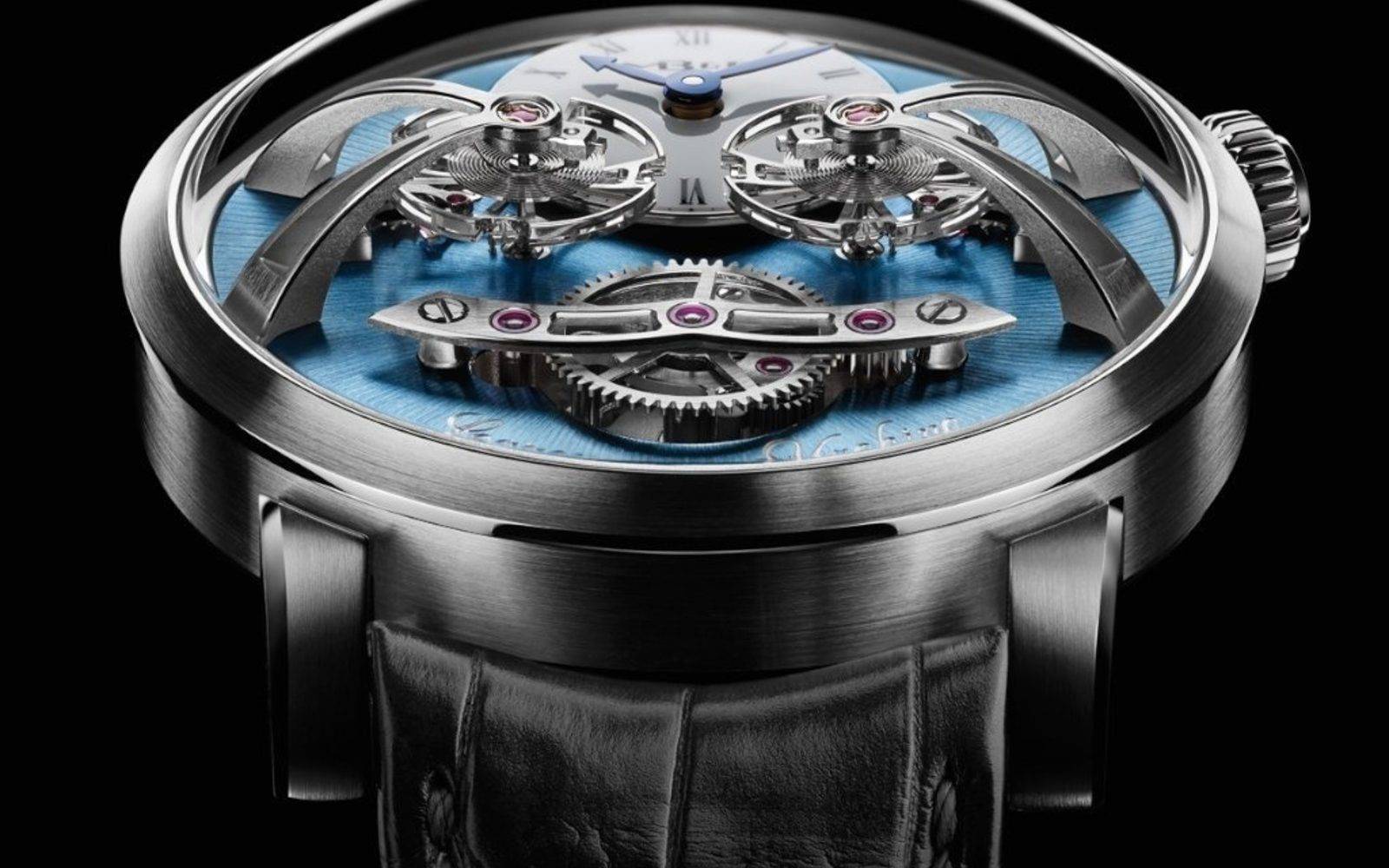
Deep Thoughts, Uncategorized ←
What is Contemporary Horology?
This article was originally posted by Whitewall Magazine where I occasionally write as their Watch Expert:
It has 700 parts. It gives you the time in two time zones, solar time, the correct date for 200 years, the phase of the moon, the state of the planets, a representation of zodiac signs, and a split-second stopwatch. It is a marvel of mechanics and craftsmanship. It is Horology as it has been for 150 years, nearly unchanged.
It has a case like a spaceship. It has robotic arms and cubes that rotate. The fact that the arms point to the minutes and the cubes show the hours is almost beside the point. It has no traditional “complications” and yet is MORE complicated to create. It is a marvel of creativity, design and mechanical craftsmanship. It is Contemporary Horology and it is the future.
In the 1970’s, the mechanical watch industry faced a near extinction level event with the introduction of the battery powered Quartz watch which was cheaper to produce and more accurate than any mechanical watch could ever be. And in the 21st century, new technologies touched almost every aspect of life – including the telling of time. Every watch buyer has a cell phone in his pocket that gives the precise time. Production advances such as computer controlled CNC machines which can create most unfinished parts without a human hand ever touching the metal make it possible for many brands to create all of the traditional complications that were once only achievable by a handful of master watch makers. The answer this time has been to turn towards art and design.
Just as Modern and Contemporary Art brought a major shift from the previous millennia of art, Contemporary Horology marks a break from the history of watch making.
Small, independent creators have burst on to the scene to usher in this new wave of horology. These manufactures adhere to the strictest levels of quality and craftsmanship established throughout history, but redefine the fundamental notion of a watch with new materials, new ways to display the time, or even by creating fully three-dimensional kinetic sculptures. These artisans are altering the fundamental idea of what a watch IS. Rather than add complications to give extra information, they have developed an entirely new complication of design – mechanisms and forms that have never been created before.
Technical prowess is shown by the addition of “complications,” additional functions to the basic time-telling elements. The trend towards art and design is not only found in the most extreme sectors of the industry, even the most traditional brands are shying away from wedding cake style layerings of complications and experimenting with design complications such as digital time displays or new materials to increase precision and durability, often creating seemingly simple watches that are, in fact, incredibly complicated to produce.
For astute collectors seeking to find value in an often over inflated industry, these new types of complications are becoming very popular. There is an emotional connection created between the watch maker and the customer when a risk is taken, a novel solution is developed, a radical sculpture is created. Many will dislike it or not appreciate it. They will always prefer their traditional horology. But the collectors who do get it become passionate supporters.
I am one of these collectors myself. A contemporary art collector as well, I gravitated immediately towards these new watch creators as soon as I became aware of them. I have loved watches for my entire life, but the more I learned about the watches and the industry, the more many of them started to feel like a commodity rather than a wearable piece of art. Once I learned about the very niche world of these independent creators, my passion returned. So much so that I left my previous profession in the finance industry to work with MB&F, an Horological Design Lab on the forefront of this Contemporary Horology movement. With this column, I hope to share my passion for watches and my experiences viewing the industry as a collector and as an insider.
Contemporary Horology is about creativity, experimentation, new kinds of craftsmanship, and passion. For 150 years, watches have been more or less the same and for good reason: they were tools to give necessary information. In 2010, we are surrounded by information. The watch is now free to be an expression of emotion, a mechanical sculpture, and a piece of contemporary design and modern taste. Oh yeah, and for no extra charge it will give you the time.